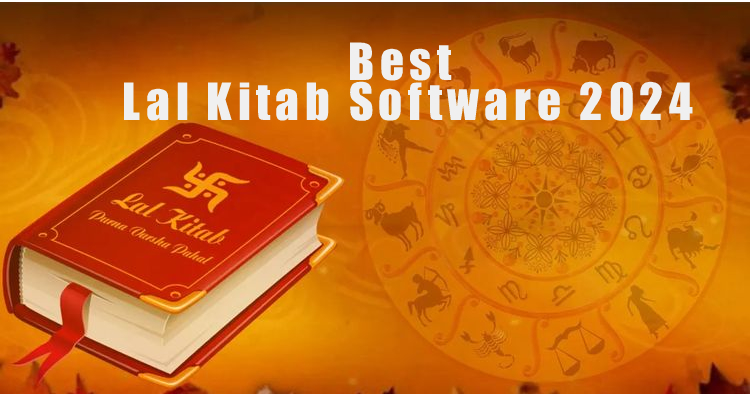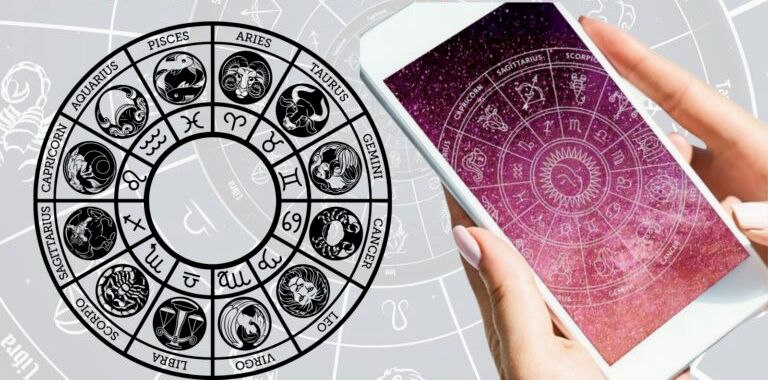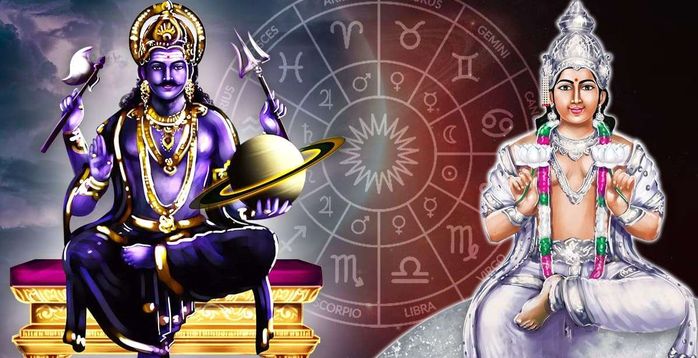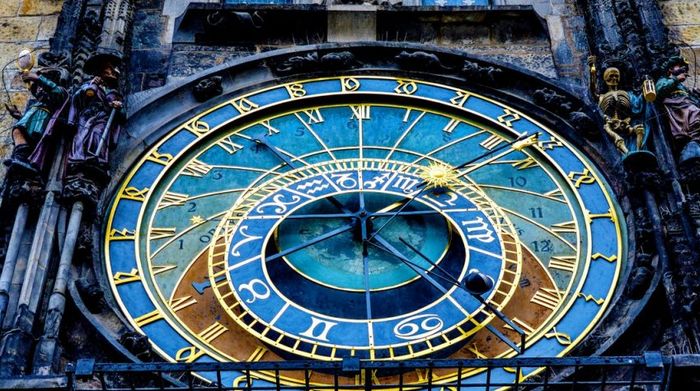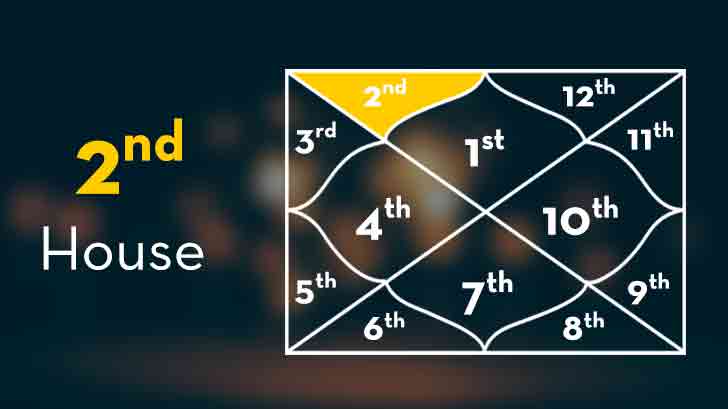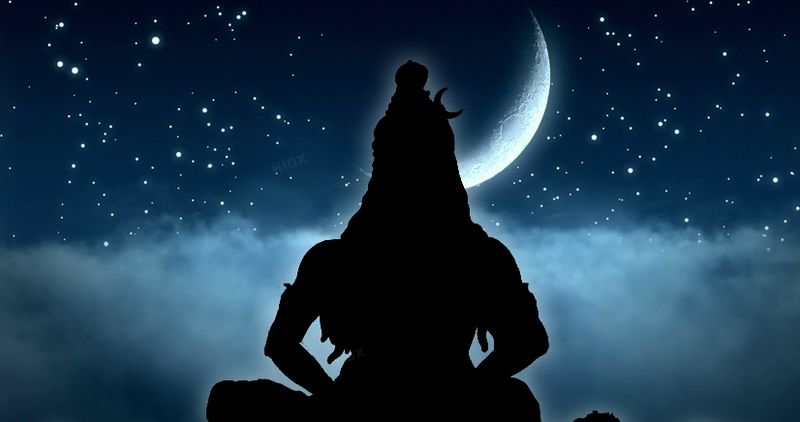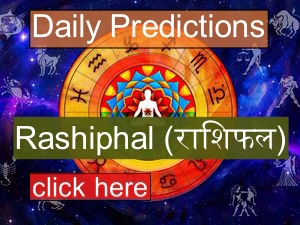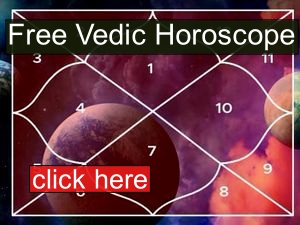Vedic Astrology
Vedic Astrology
Various Jaimini Rashi Dashas & Timing of Events

JAIMINI "RASHI-DASHAS
Unlike traditional Parashari system, the reckoning in Jaimini system is every so often in typical "zodiacal" order, while at some different instances it is in "reversed" order. It is perhaps this characteristic nicety of the system - which makes a number of the novices pretty nervous, or pressured, or even afraid. But if someone is absolutely endowed with an alert thoughts, sharp intelligence, retentive memory, and potential to pay attention, then with a few years' of profound studies and realistic enjoy, he/ she can increase a reasonably good insight, and stay up for becoming absolutely able to dealing with the horoscopes quite without difficulty. But it deserves citing here that one need to no longer count on to master the subject in double-brief style and vini-vidi-vici fashion; if each person tries to accomplish that, then he/ she have to as an alternative bear in mind the famous and significant phrase - which Napoleon had struck out from his dictionary.
There are as many as 42 Dasha-systems in Jaimini Astrology. A true lots of them aren't handiest achievable, however also may be hopefully depended upon for arriving at the timings of all important and crucial activities of existence. These Dasha-structures are neither 'conditional' nor horoscope-unique - that is, those can be very easily and fantastically advantageously used for any horoscope with a first rate diploma of self belief, and flawlessly enjoyable results may be obtained quite without difficulty.
Excepting the Dashas of the "Karaka Dasha" class - wherein the Dashas are of Signs and Planets each, in most of the Jaimini Dasha-systems, the Dashas (and glaringly the Bhuktis and the Antaras) are of Signs (and not of Planets) . These Dasha-systems essentially vary from the more popularly used conventional Parashari* Dasha-systems (of course, except in case of K.C.D.* or Kala-Chakra Dasha) - as therein the Dashas are of Planets (and not of Signs).
Jaimini Rashi-Dashas are not dependent on the Longitude of Moon :
Another important distinction with the Parashari Dashas is that, in case of Jaimini Rashi-Dashas, the reckoning isn't always depending on the Longitude of Moon, and there may be no "Balance of Dasha at Birth". The reckoning is alternatively at once or in a roundabout way depending on the "Ascendant" as a substitute . The intervals of the Dashas are "constant" in some cases (as in Sthira Dasha/ Brahma-Graha Dasha, Mandooka Dasha/ Trikuta Dasha), whereas elsewhere (as in Chara Dasha/ Trikona Dasha, Atma-Karaka Dasha/ Upa-Karaka Graha Dasha), the durations are "variable". But in both the cases of those two classes, the periods of the Dashas are always in terms of a sure variety of *'complete' years (*however, there may be a single exception: in case of Yogardha Dasha, the length may consist of 'half' year additionally).
The Duration of Dashas, Bhuktis & Antaras in Jaimini Rashi Dashas :
The periods of Jaimini Chara Dasha and Jaimini Trikona Dasha can variety from 1 year (minimal) to 12 years (most); the durations of Jaimini Sthira Dasha and Jaimini Brahma Graha Dasha can variety from 7 yr (minimum) to 9 years (maximum); the periods of Jaimini Mandooka Dasha and Jaimini Trikuta Dasha also can variety from 7 yr (minimal) to nine years (most); the intervals of Jaimini Atma-Karaka Dasha and Jaimini Upa-Karaka Graha Dasha can range from 7 yr (minimal) to 12 years (most).
For "Timing of Events" by means of using the Jaimini Rashi-Dashas, the very pleasant of results can handiest be acquired whilst - no matter the Dasha-length - the Bhukti-periods are taken as to be of one 12 months every . As such, whilst the Dasha-duration is of 12 years - that could manifest in uncommon cases in a few Jaimini Dashas like Chara Dasha, Trikona Dasha, etc; but it could never manifest in case of Sthira Dasha, Brahma Graha Dasha, Mandooka Dasha, Trikuta Dasha, and so forth - all the signs and symptoms will now not have their Bhuktis in a particular Dasha. The numerical determine of Dasha-length (in years) will suggest the quantity of Bhuktis.
The Antara-intervals are usually of one month each - in any Bhukti in any Dasha. As such, all of the symptoms will truely have their Antaras in any Bhukti in any Jaimini Rashi-Dasha
The Sequence of Rashi-Bhuktis :
The collection of Bhuktis in any Rashi-Dasha is determined in the equal manner. It usually commences from the sign in which the lord of the Dasha-sign is placed ; then :
(i) If the lord of the Dasha-signal is situated in an "ordinary" sign, then the succession of Bhuktis are in "zodiacal" order - starting from the commencing signal. But,
(ii) If the lord of the Dasha-sign is situated in an "even" signal, then the succession of Bhuktis are in "reversed" order - beginning from the starting up signal.
The Sequence of Rashi-Antaras :
The sequence of Antaras in any Rashi-Bhukti is also discovered inside the equal way. It always commences from the signal wherein the lord of the Bhukti-signal is placed ; then :
(i) If the lord of the Bhukti-signal is located in an "abnormal" signal, then the succession of Antaras are in "zodiacal" order - beginning from the commencing signal. But,
(ii) If the lord of the Bhukti-sign is situated in an "even" signal, then the succession of Antaras are in "reversed" order - starting from the starting off sign.
Reckoning of Aspects as according to Jaimini ideas :
While locating "Timing of Events" with the aid of the use of any Jaimini Rashi Dasha, the "Aspects" are usually of Signs (and now not of Planets). As the "Aspects" as used in Jaimini Astrology are exclusive from the "Aspects" as utilized in traditional Parashari Astrology , for fending off possible confusion and retaining difference, I even have coined the time period "Jaspects" for denoting Jaimini Aspects. ... Jaimini Aspects are exclusive from the Tajaka Aspects additionally (that is used in Varshaphala and also in Prashna); for the latter, owing to the very same cause, I have coined the time period "Taspects".
The Jaimini Aspects are of two kinds : (i) Frontal, and (ii) Lateral. Although this doesn't constantly make tons of distinction throughout delineation of outcomes, that is to be borne in mind that the "frontal" jaspects are especially stronger in have an effect on - in comparison to the 'lateral' ones.
Importance of the "Argalas" (if gift) :
The "Argalas" (Mukhya, Gouna, and Vishesha) and 'Virodha-Argalas' are of special importance for delineation of outcomes in Jaimini Astrology.
Importance of the "Karakas" :
The "Karakas" (in maximum instances, as per "Sapta-Karaka" device) are also considered important. The signal in which the Atma-Karaka is located is taken into consideration to have won some 'additional' power for it. Among the opposite Karakas, the most important is "Amatya-Karaka" - that is considered for Profession (Service/ Business); 'Dara-Karaka' is taken into consideration for Marriage, and so on.
Importance of the "Padas" :
The "Padas" (or Arudhas) of Houses (which correspond to as many symptoms far from the Ascendant, as they're from the Ascendant) also of extensive impact in Jaimini Astrology. ... Incidentally, I want to say it here that the "Houses" in Jaimini Astrology corresponds the respective 'Signs' - beginning from the Ascendant-sign.
Noting the blended have an effect on of Jupiter & Mercury (if there) :
If in a particular chart, any sign is located beneath the joint have an effect on of Jupiter and Mercury - that is, both are conjoined in the sign, or considered one of them is situated within the sign - even as the other jaspects it, or each of those two planets are jaspecting it, then also the power of the signal becomes more desirable for providing favorable effects in fashionable. It might be greater so if as a minimum one of the planets emerge as the lord of a involved house, even as the other planet will become the specific "Karaka" (as according to Sapta-Karaka) having the identical/ similar indications.
Looking for the presence of Kartari Yogas (if any) :
For presence of Kartari Yoga, one or extra planet/s have to be situated in each the 2d and the twelfth - as reckoned from the signal. If one or greater herbal benefic planet/s is/ are located in each the locations as reckoned from the signal - whilst no natural malefic planet is located in both of these locations, then the sign is below "Subha Kartari Yoga". It is indicative of favorable outcomes and auspicious happenings - at some stage in the duration of the sign, that is underneath such have an effect on.
But if one or more natural malefic planet/s is/ are located in both the locations as reckoned from the signal - at the same time as no natural benefic planet is situated in both of those two places, then the sign is beneath "Papa Kartari Yoga". It is indicative of damaging effects and inauspicious happenings - during the length of the sign, that is beneath such affect.
The 4th and the eighth positions from a signal are 'vital' locations :
The 4th and the 8th positions from a sign are important places, and if planets of 'comparable' nature are situated in such locations - as reckoned from the signal - exerts their characteristic affects on the signal, which manifests at some stage in the length of such signal. The influences are particularly just like the respective Kartari Yoga (as referred to above).
Thus if one or greater natural benefic planet/s are located in both the places as reckoned from the sign - at the same time as no herbal malefic planet is located in both of these two places, then it's miles indicative of favorable effects and auspicious happenings - for the duration of the period of the signal, that's beneath such have an effect on.
But if one or more natural malefic planet/s are situated in both the locations as reckoned from the sign - even as no herbal benefic planet is located in both of these places, then it's far indicative of detrimental consequences and inauspicious happenings - during the length of the sign, that is underneath such have an impact on.
Looking for the presence of "Repeat Patterns" :
In any chart, the Ascendant-lord is located in some signal - which corresponds to sure house as per the sign-matter in usual "zodiacal" order. If from any sign (apart from the Ascendant), the equal mixture is located, then the "sample" of the horoscope may be considered to were "repeated". During the period of the signal (Dasha/ Bhukti/ Antara), the significations of that particular residence - as denoted through the signal-count - is probably to benefit some prominence. An example could make the learner's comprehension clearer :
Suppose, the Ascendant is Leo, the Sun is in Taurus, Venus is in signal Cancer, Saturn is in sign Libra, and so on. ... Now, up to this a part of the chart is applicable for our discussion right here. In this horoscope, we see that the Ascendant-lord (Sun) is located inside the tenth from it. As such, it could be stated to be the "sample" of this horoscope. ... We locate that the identical pattern is "repeated" in case of signal Libra (as the sign-lord Venus is situated in the 10th from it), and also in case of sign Capricorn (because the signal-lord Saturn is located in the tenth from it). ... So, at some stage in the Dasha/ Bhukti/ Antara of signs and symptoms Libra and/ or Capricorn, we ought to check for the presence of harmonious 'inter-relationship' among the 10th-lords (as reckoned from the applicable symptoms - DS, BS, AS, and the Ascendant). It need to however be borne in mind that simply through glancing at the "repeat pattern", the viewer have to no longer jump up, and arrive at a premature end that during the durations of such signs, some happening bearing on the tenth house is positive to take place; genuinely, it can no longer appear in any respect in case if the vital requisite - the inter-relationship - isn't always located to be present.
In the event of digital absence of the most important requisite - the harmonious 'inter-courting' the various lords of the signification residence (as reckoned from DS, BS, AS, and Ascendant) - although the symptoms cannot be construed as to be 'confirmatory', nonetheless the presence of the "repeat sample" may be taken into consideration to be an beneficial 'pointer' , which draws the eye of the viewer in a selected route - that can be received from the horoscope clearly at a look.
Importance of a few Divisional charts & extraordinary methods of reckoning for 'female' natives :
The combos of "Yogas" (or planetary combinations) are extensively extraordinary in Jaimini Astrology. For delineation of results, only the Yogas as per Jaimini ideas are applied. (The freshmen ought to now not over-enthusiastically attempt in vain to combine up the typically located and effortlessly remembered Parashari Yogas like Budhaditya, Gaja-Keshari, Pancha Maha-Purusha, and so forth with Jaimini gadget). ... Some divisional charts are used in Jaimini Astrology for this motive. Of them, the maximum essential are : (i) Drekkana chart, and (ii) Navamsha chart. It must be stated that the method of reckoning of these divisional charts range depending on the 'gender' of the native; the methods of reckoning may additionally continue to be the identical for 'male' people; however these surely turn out to be extraordinary for "female" persons :
If the local is "female", then :
(i) Somanath's approach is to be observed for reckoning of 'Drekkana' . (Whereas, for 'male' people, the conventional approach itself is used).
(ii) Krishna Mishra's approach is to be accompanied for reckoning of 'Navamsha' . (Whereas, for 'male' humans, the traditional technique itself is used).
Some additional divisional charts additionally find beneficial utilization in Jaimini Astrology - which are usually now not used in traditional Parashari Shodash Varga System (Consisting of the main Lagna-Kundali and 15 extraordinary divisional charts). These are Ekadashamsha or Rudramsha (D-11), Panchamsha (D-5), Shashtamsha (D-6), Ashtamamsha (D-8), and so on.
Certain Rashi-Dashas are relevant best to positive Divisional Charts :
It is of interest to word that positive Jaimini Rashi-Dasha Systems are relevant to positive Divisional Charts. Thus, Mandooka Dasha is relevant to Ekadashamsha or Rudramsha (D-11) charts; for keeping difference, it's miles called Rudra-Mandooka Dasha . In this Dasha, a planet gains area of expertise by means of distinctive feature of becoming the 'Hara' - which has usefulness for delineation of consequences in Mandooka Dasha (that is desired for girl individuals) and also in Trikuta Dasha (that's preferred for male persons).
Jaimini Chara Dasha - as according to the method of Raghava Bhatta & Nrisimha Suri - is relevant to Navamsha charts - which is drawn as according to Krishna Mishra's technique in case of 'girl' natives (and in traditional approaches for male natives). This new shape of Dasha is termed as PadaNathAmsha Dasha , with the most effective distinction that the intervals are taken in phrases of 'Nakshatra' years @ 324 days/ year).
Approximately, at the durations around which one PNA Rashi-Dasha ends and any other one starts offevolved, some wonderful exchange of impacts are located. The PNA Rashi-Dasha in Navamsha charts, and the Jaimini Chara Dasha (as in keeping with RB-NS approach) in "Nadi-Amsha"* charts may be depended upon for finding some auspicious events like Foreign Journey/ Travel (among numerous other thrilling activities of life).
Jaimini Chara Dasha is perfectly applicable to "Nadi-Amsha"* charts additionally :
The Nadis are very minute divisions of signs; those are one hundred fifty in range, and are of unequal span . A usual chart termed as Nadi-Amsha chart can be fashioned with the aid of considering the constitutional nature of the signs and symptoms (chara, sthira or ubhaya) and the corresponding Nadi-number for the respective positions of the planets (Sun to Ketu) and the Ascendant. In this chart, Rahu and Ketu will always stay within the same sign, and the disposition of this unique sign gains importance (of path, among various others) for delineation of consequences.
If the Time of Birth is thought very effectively, and due checking is done for ascertaining whether very moderate adjustment is wanted for it is "rectification" or no longer, then those "Nadi-Amsha" charts (which haven't any resemblance to the Lagna-Kundali or any divisional chart) can be efficaciously used for delineation of the character of consequences (and additionally for locating the "Timing of Events" with accuracy and precision). ... The "Antaras" of 1 month's duration (which may be pretty without problems discovered by following the identical set of standards - as is commonly followed in case of judging from Lagna-Kundali) may be the unit for timing of events; and the timings for a sequence of activities can without difficulty be discovered one after any other with precision and accuracy.
Kota Chakra in Astrology

Originally, Kota Chakra was getting used for divining the outcome of a struggle between warlords – one is the Lord of the Castle and the opposite is the Invader. Enemy's invasion is similar to raids (attacks!) conducted with the aid of punitive authorities, destruction of the castle is quite akin to fall of the ruling government, and the outcome of a dispute or lawsuit – in a manner – has a few similarities with the final results of warfare; accordingly, Kota Chakra can be efficiently used for those purposes – except finding out the durations of sufferings due to physical and mental issues, duration of disturbing periods, opportunity of restoration, and many others.
It have to always be borne in mind that Kota Chakra best deals with the nakshatra-function of planets in transit – close to the Nakshatra-function occupied via Moon at Birth. As the effects of operating directional impacts (Dasha-Bhukti, and so forth as in keeping with popularly used Vimshottari Dasha***; and/ or other Dasha-systems like Kala Chakra Dasha, Yogini Dasha, and so on – if the man or woman will well conversant with use of those) are of a whole lot extra importance than those of transiting planets, inaccurate (which may even be ridiculous) conclusions must in no way be arrived at from the transit concerns only. The effects (favorable or in any other case) may be expected to materialize handiest when the transit impacts are perfectly in settlement with the operating directional impacts.
[ For obtaining the best possible results, the use of 28-Nakshatra-based Dasha-systems are recommended for studying the Kota Chakra. If in somebody's horoscope, Sun is situated in the Ascendant, then Shashti-Hayani Dasha (60 years' full-cycle) is to be used; in other cases, Ashtottari Dasha (108 years' full-cycle) – depending on the method as applicable (Krittikadi- or Aridradi-) should be followed. … However, it is a matter of deep regret that very few people actually know (and great many others are simply not interested to learn) how to use these relatively a-bit-more-complex – yet very interesting – Dasha-systems effectively. … As in these two systems the Dashas are not only of planets (as is in Dashas like Vimshottari), but are of a 'Planet-Nakshatra' combination, the 'Nakshatra' of the operating Dasha (as per Shashti-Hayani or Ashtottari) deserves to be given special importance. ]
Based on 28 Nakshatra-system (together with the tiny tot Abhijit), Kota Chakra is a very vital and beneficial tool for ascertaining the timings of feasible unfavourable incidents like sudden developments, untoward happenings, unintended mishaps, last 'first-rate break out' (particularly of violent types: like suicide, accidental homicide, homicide, assassination), and so forth specifically by means of analyzing transit positions of planets and their course of motion. In positive sensitive Nakshatra-positions (which varies from chart to chart), the access- and go out- of benefic and malefic planets, their alternate of direction of motion, and their rate of motion (whether or not faster or slower than average) are of first-rate importance in delineation of consequences.
The planets termed as 'Kota-Swami' and 'Kota-Paala' – together with their afflictors (if any) – are of unique significance in Kota Chakra. 'Kota-Swami' is the lord of Moon-sign***, and it is the significator of the man or woman's bodily body and health; whereas 'Kota-Paala' is determined as in step with Moon's Nakshatra-Charan, and it signifies the 'protector' of the man or woman's physical body. At a particular time frame, if both of Kota-Swami and Kota-Paala are located to be vulnerable and/ or stricken – whilst some natural malefic planets and/or useful malefic planets are determined to be transitting through a few sensitive Nakshatra-positions, then quite unfavorable effects are signified – in keeping with the characteristics of the afflicting planets.
If a single natural malefic planet (who's a 'maraka' or 'badhaka' or otherwise a functional malefic planet too) afflicts both of the 'Kota-Swami' and the 'Kota-Paala' by means of conjunction or component, then the nakshatra-function of that malefic planet in transit merits to accept very special importance – due to the fact it could be a capacity harbinger of adverse happenings. But if a unmarried natural benefic planet (who is neither a 'maraka' nor 'badhaka' or otherwise a functional malefic planet) impacts each of the 'Kota-Swami' and the 'Kota-Paala' via conjunction or aspect, then the nakshatra-position of that malefic planet in transit additionally merits to take delivery of very unique significance – because it is going to be a capability indicator of favorable happenings or even memorable occasions.
If in a person's chart, Moon is worried in sign-change with a planet, then that planet becomes the 'mukhya' (foremost) 'Kota-Swami' – whereas Moon becomes the 'gouna' (secondary) 'Kota-Swami'. In such instances, if a single natural malefic planet (who is a 'maraka' or 'badhaka' or otherwise a purposeful malefic planet too) afflicts both of these 'Kota-Swamis' (Mukhya and Gouna) by way of conjunction or element, then the nakshatra-function of that malefic planet in transit merits to be watched with difficulty – for the reason that it could be a potential harbinger of unfavorable happenings.
As usual, the useful natures of the planets are determined from the Birth-chart simplest – from their respective lordship(s) and d isposition; and the 'maraka' and the 'badhaka' planets are given due consideration. From the Birth-chart, a wellknown assessment about the probably 'durability' is completed first, and the possible nature of activities likely to take place around a particular time-duration is likewise located out. … Some astrologers use Kota Chakras side by means of facet – one displaying the Nakshatra-positions of planets within the Birth-chart (which stays the same for life), even as the opposite is for the Nakshatra-positions of planets in transit on a specific day – for which prediction is sought.
The Kota Chakra is variously represented as three concentric squares or rectangles or octagons; out of the three variations, the concentric rectangles are more usually used. The space enclosed in the innermost geometric determine is named as 'Stambha' (it stands for the individual's physical body and well-being); the gap outdoor the innermost figure and enclosed by way of the center geometric parent is named as 'Madhya'; the space out of doors the center determine and enclosed by the outermost geometric determine is named as 'Prakaara'; and the distance out of doors the outermost geometric figure is named as 'Bahya'.
The figures are divided into halves by way of a vertical immediately line (or a pair of straightlines – which indicates 'paths'); those are then similarly divided into – and thereby resulting in 4 quarters – by means of a horizontal directly line (or a couple of straightlines – as performed earlier than). Thereafter, by the use of two diagonal immediately strains (or two pairs of straightlines – as completed earlier than) are used for making in addition divisions. Thus the 3 concentric geometrical shapes are fragmented into eight parts.
The 4 diagonal strains (or pairs of traces) are known as the 'access' paths for 7 planets in transit (from Sun to Saturn) and 'exit' paths for 2 nodes (Rahu and Ketu); every any such paths have three Nakshatras in succession. The 2 vertical traces (or pairs of strains) and the two horizontal strains (or pairs of strains) are known as the 'exit' paths for 7 planets in transit (from Sun to Saturn) and 'entry' paths for 2 nodes (Rahu and Ketu); each any such paths have 4 Nakshatras in succession.
The Nakshatra of the Moon (on the idea of 28 Nakshatra-machine) is marked within the pinnacle left hand corner – on the outside of the outermost geometric figure. Beginning from the top left hand corner, along the diagonal line – towards interior – three nakshatras are marked in succession. Then next four nakshatras in succession are marked starting from the innermost geometric determine – towards outdoor. In clockwise way, this technique is continued inside the identical manner – by means of alternately marking 3 nakshatras starting from out of doors and intending towards inside, and 4 nakshatras beginning from inside and intending towards outside, in regular succession. Thus the locations of 28 Nakshatras are marked.
For fitness and health, the 'Stambha' vicinity (i.E., the distance included via the innermost geometric figure) is the most essential. It might be seen that four extraordinary nakshatras – being the 4th, the 11th, the 18th, and the 25th, as reckoned from the Nakshatra occupied via the Moon – are in this location. These 4 naksharas are known as the 'Stambhas' (pillars helping the primary shape); when the benefic planets are transitting via any of these 4 nakshatras, useful consequences are predicted, and whilst the malefic planets are transitting through any of those four nakshatras, it is reasonable to count on that the consequences might be simply the obverse.
The 'Stambha' and the 'Madhya' regions represent the internal part of the Kota Chakra. Natural and practical benefic planets (when no longer in retrogression) in this place suggest inherent electricity and great resistance to resist unfavorable impacts; herbal and purposeful malefic planets do just the obverse (greater so while retrograde). The 'Prakaara' and 'Bahya' areas represent the outer part of the Kota Chakra – which represents the instances and surroundings. Natural and functional malefic planets indicate damaging occasions (extra so when retrograde); but natural and practical benefic planets (while now not in retrogression) suggest stepped forward circumstance.
For extreme affection of health (or suffering to the bodily frame) due to outside impacts, the 'Prakaara' region (i.E., the distance outside the middle geometric parent and enclosed in the outermost geometric discern) is the maximum vital. It might be seen that eight special nakshatras are there; one set of 4 exclusive nakshatras are on the 'access' paths and some other set of 4 extraordinary nakshatras are at the 'exit' paths. For the 7 planets (from Sun to Saturn), the four Nakshatras on the 'access' route are – as reckoned from the Nakshatra occupied by way of the Moon – the 2nd, the ninth, the 16th, and the 23rd respectively, and the 4 Nakshatras on the 'exit' route are the sixth, the thirteenth, the 20 th, and the twenty seventh respectively. As noted earlier, the reverse holds appropriate in case of the 2 nodes (Rahu and Ketu), the 'access' turns into 'go out' and vice versa.
If in a few character's Kota Chakra, one or greater herbal malefic planet(s) – greater so if they're useful malefic planet(s) too – transit through any of these four nakshatra mendacity on the 'go out' route of the 'Prakaara' vicinity at a sure factor of time, then the planet(s) is/ are turn out to be capable of handing over probably dangerous 'blows' to the individual's bodily frame – which may even show to be fatal if the character is passing via the Vimshottari Dasha-Bhukti of 'maraka' or 'badhaka' or otherwise negative planets. … The timing(s) may also coincide with the onset of "retrogression" of that particular malefic planet or within some days from it; it's miles obvious that such planets can be Mars and Saturn – as Sun can never be retrograde, and the nodes (Rahu and Ketu) are always retrograde.
Similarly, if one or more herbal benefic planet(s) – extra so if they are useful malefic planet(s) too – transit via any of these 4 nakshatra mendacity at the 'go out' direction of the 'Bahya' area at a certain point of time, then the planet(s) is/ are turn out to be able to handing over doubtlessly dangerous 'blows' to the individual's physical frame – which may even show to be deadly if the man or woman is passing through the Vimshottari Dasha-Bhukti of 'maraka' or 'badhaka' or otherwise adverse planets. … The timing(s) may additionally coincide with the onset of "retrogression" of that particular benefic planet or within a few days from it.
If a natural benefic planet becomes a practical malefic for being a trika-lord (i.E., the lord of 8th or sixth or twelfth), then also its conduct can show to be quite difficult while in transit it crosses over one of the 'Bahya' nakshatras – just out of doors and 'Prakaara'; it could be greater so if in transit it conjoins with a dire malefic planet like Mars or Saturn. … However, such a element can only occur the strolling Vimsottari Dasha is of a planet – who is a trika-lord (or is placed in a trika-house), the Bhukti is likewise of a planet – who is a trika-lord (or is positioned in a trika-residence). … Besides, the dispositors (or the sign-lords) of Rahu or Ketu can behave mischievously – extra so whilst Rahu and/ or Ketu in transit is/ are occupying 'Stambha' nakshatra(s), and the concerned dispositor is near 'Prakaara' – internal (or in a 'Prakaara' nakshatra) if the dispositor is a natural malefic, or outside (or in a 'Bahya' nakshatra) if the dispositor is a natural benefic.
Commencent of "rerogression" of any planet is usually awful. In case of herbal malefic planets, it is indicative of unintentional mishap, untoward occurring, and so forth; and in case of herbal benefic planets, it indicates withdrawal of support or safety. Planets in 'atichara gati' (expanded motion) also produce adverse outcomes; if Mercury in increased movement is transitting through a touchy nakshatra, unintentional mishaps can also arise as a consequence of vagaries of nature or stemming from human errors.
If two or extra natural malefic planets are transitting over any of the 'Stambha' nakshatras, or at the least one natural malefic planet is transitting this kind of nakshatra – while one or more malefic planets are about to go into, and no natural benefic planet is transitting over any of such nakshatras, the man or woman's defence or resistance will become very susceptible. Further, if or extra natural benefic planets are on any of the 'Madhya' nakshatras of the 'go out' route, vulnerability will increase similarly. Additionally if at the least one natural malefic planet – which is transitting over any of the 'Prakaara' nakshatras of the 'exit' path – turns retrograde, then the worst feasible taking place of calamitous kind is feared. Such kind of mixtures highlighting the predominance of malefic affects are termed as 'Durga Bhanga Yoga' *** (destruction of the fortress), and there are many variations of it.
In case of (Late) Shri Rajiv Gandhi, on the fateful day (21/ 05/ 1991), two natural malefic planets – Mars and Ketu – were transitting over one of the 'Stambha' nakshatras (Punarvasu); out of the two planets, one become retrograde (Ketu), and no herbal benefic planet changed into transitting over any of the 'Stambha' nakshatras. Two natural benefic planets had been at the 'Madhya' nakshatras of the 'exit' course – Jupiter in Pushya, and Mercury in Ashwini. Saturn was transitting over one of the 'Prakaara' nakshatras of the 'exit' course – Shravana. As Saturned turned retrograde on 18/ 05/1991, the dreadful
'Durga Bhanga Yoga' (destruction of the fortress) combination have become entire. Rajiv Gandhi became assassinated on 21/ 05/ 1991.
With exceptional precision and extraordinary accuracy, Kota Chakra suggests the 'timings' – that may probably trigger the occasion.
We desire to mention about a certain statement. While the Vimshottari Dasha-Bhukti durations of detrimental planets perform (of Trika-lords, Marakas, or Badhakas), if a natural malefic planet in transit conjoins with the 'Kota'-Swami planet or 'Kota'-Paala planet in both the third or the 22nd nakshatra as reckoned from the Nakshatra occupied by means of the Moon at birth, the possibility of laid low with extreme health-affection will increase. It is comprehensible that those two are unfavorable nakshatras if the reckoning is as in step with 27 nakshatra-gadget – in view that third is Vipat and 22nd is Vainashika. But why have to it happen so when the reckoning is as consistent with 28 nakshatra-machine (as accompanied in Kota Chakra) had baffled us in view that lengthy.
In Kota Chakra, as in keeping with tradition, best the 7 Planets (Sun to Saturn) and 2 Lunar nodes (Rahu & Ketu) are considered. In respect of Rahu (and Ketu) it must be stated that their 'mean' positions are taken into account, and those are taken into consideration to be 'continually retrograde'. The 'proper' positions of Rahu (and Ketu) aren't for use; that is given that such positions can at times vary via approximately 1*45' (max.) – which would possibly adjust their Nakshatra-positions, and 'proper' Rahu (and Ketu) can at times be 'static' or maybe in 'direct' motion. Although the transit-positions of Uranus, Neptune, and Pluto will be experimented with, yet no premature conclusion should be arrived at from the positions of these planets in isolation. All types of feasible events and happenings – including those indicated through the Trans-Saturnine planets – can very well be gleamed from the positions of 9 planets (Sun to Ketu).
Some open-minded students have experimented with the transit-positions of the Trans-Saturnine planets in Kota Chakra – Uranus, Neptune, and Pluto. Although the consequences have not been determined to be very encouraging, nevertheless it has been found that after Pluto is on the 'access' direction, and is intending toward the 'Madhya' vicinity or 'Stambha' region – while it is conjoined with a natural malefic planet, and this too takes place in a nakshatra owned by using a natural malefic planet, the individual's vulnerability will increase substantially. In case of (Late) Smt. Indira Gandhi, at the fateful day (31/ 10/ 1984), transit Pluto become on 'access' path intending towards the 'Madhya' place; it became conjoined with Sun (a herbal malefic planet) in Nakshatra Aridra (owned by means of a herbal malefic planet, Rahu) – at the same time as Rahu (and Ketu) have been afflicting two 'Stambha' nakshatras. The actual conjunction of Pluto and Sun was on 25/ 10/ 1984, and Sun had been transitting over this nakshatra (Aridra) from 23/ 10/ 1984 to 05/ eleven/ 1984.
The sacred problem of Astrology does now not propose a fatalistic doctrine; it most effective indicates the prevailing inclinations round a specific time-duration. As it's miles stated that being forewarned is sort of like being forearmed, the observations from Kota Chakra can be of gigantic realistic usefulness – as the individuals can made to emerge as extremely cautious and careful for the duration of the indicable prone length(s), and resort to all types of preventive and precautionary measures.
It is of hobby to word that Kota Chakra has widespread similarities (and variations additionally) with Kala Chakra – which is used in Horary Astrology (Ref. Prashna Marga, Vol-2, Chapter-XVI). In Kala Chakra, positive nakshatras benefit unique significance by becoming the significators for Prana, Deha, Mrityu, etc. For the reason of avoiding a complicated mix-up, we've included Kala Chakra one after the other in following.
Kala Chakra in Astrology

Kala Chakra has good sized similarities with Kota Chakra (which we've got included earlier in details). Whereas Kota Chakra is for checking planetary positions in transit, Kala Chakra is for horary or prasna charts – which in other phrases, is nearly synonymous with the transit charts. Both of these two Chakras are based of 28 Nakshatra-device (together with the tiny tot Abhijit).
In Kota Chakra, the starting point (the nakshatra of commencement) is 'variable'; it depends at the Janma-Nakshatra (the Nakshatra occupied by means of the Moon at Birth). But in Kala Chakra, the place to begin is 'constant'; it continually commences from the Nakshatra Rohini (Nakshatra No.- 4) and ends with the Nakshatra Krittika (Nakshatra No.- 3).
Besides, some other unique distinction is to be noted. In Kota Chakra, the numbers inside the chart without delay correspond to nakshatra-positions (as in line with 28 Nakshatra-machine); however in Kala Chakra, this correspondence is oblique – despite the fact that the order of succession is everyday zodiacal as standard – in the identical clockwise path. In Kala Chakra, the indicated numbers are simply the 'serial numbers'; and the 'serial variety' of a planet is received by way of including 25 to the nakshatra range (as in step with 28 Nakshatra-gadget) it's miles occupying, and expunging 28 from it whenever the sum exceeds 28.
In Kota Chakra, the entry paths are along its diagonals – from the brink toward the center; and the go out paths are alongside the vertical and the horizontal dividers – from the middle closer to the threshold. But in Kala Chakra, the access paths are alongside the vertical and the horizontal dividers – edge towards the middle; the exit paths are along its diagonals – from the middle closer to the brink. … In Kota Chakra, the graduation is from the pinnacle left hand nook – whereas in Kala Chakra, the graduation is from the middle of the pinnacle. In both the instances, it lies at the entry route; and from this, the exit and access paths observe alternately within the equal zodiacal direction.
In Kota Chakra, importance is given to the 2 planets – who become the 'Kota'-Swami and 'Kota'-Paala; and if Moon has exchanged sign with a planet, then the Moon is also given importance as the 'gouna' (or secondary) 'Kota'-Swami. … But in Kala Chakra, importance is given to the serial numbers (positions) of three nakshatras – of Prana, Deha, and Mrityu. In addition, three comparable different positions also are given importance; those are – Mandi, Transit Sun, and the Birth Moon.
Besides, observations from the movement of 'Yogini' and 'Mrityu' in Kala Chakra are considered to be of great importance. The rising factors of Yogini range relying on the Weekdays (Vara) and also the Lunar days (Tithis). If Yogini's thing falls on the Arudha Lagna (or Horary Ascendant received with the aid of Random technique) or the Janma-Lagna (Birth Ascendant) or the Janma Rashi (Moon), then it's far considered very inauspicious, and a few destructive effects are probable to be the final results.
Kala Chakra is an vital device for ascertaining the chance of health and wellbeing of a person – for whom the horary (prasna) chart is cast. If the query is of a severe nature and the querent puts the query with sincerity and sincere intentions, then the solution obtained in admire of the viable final results will virtually show to be ideal.al.
Comments
No posts found


